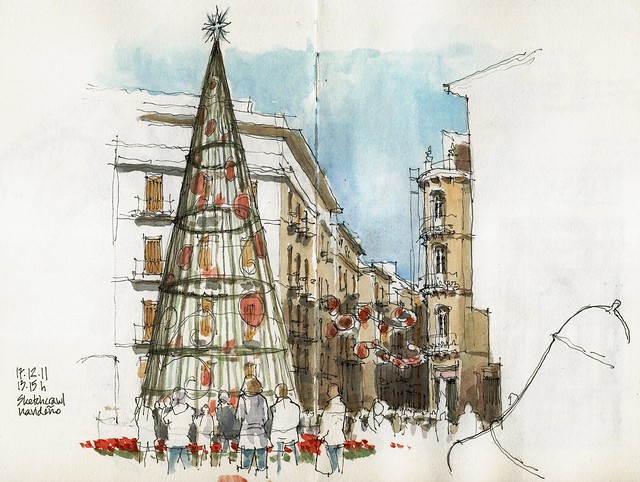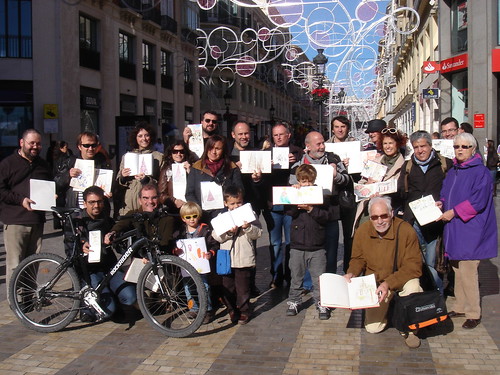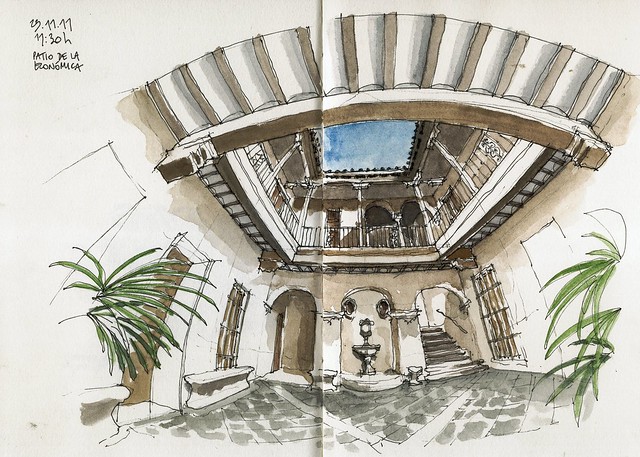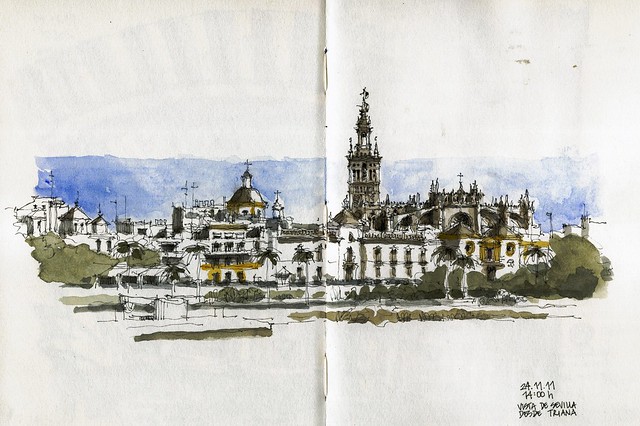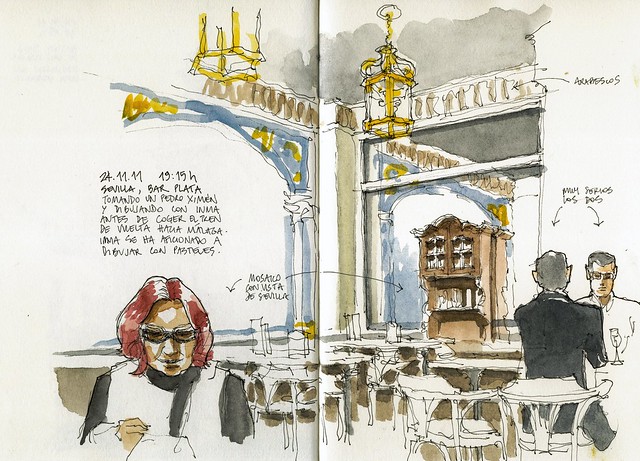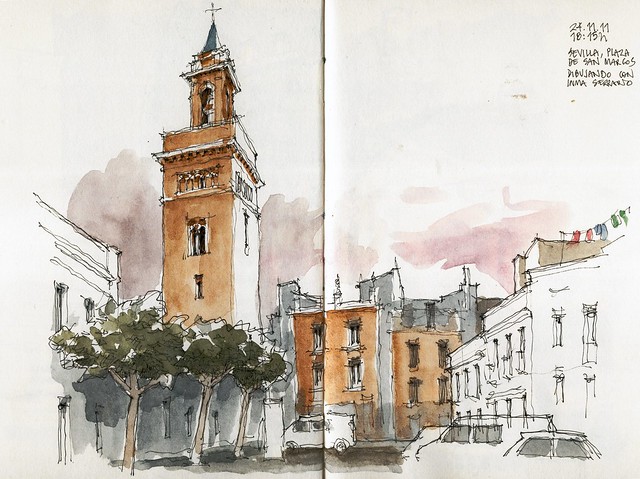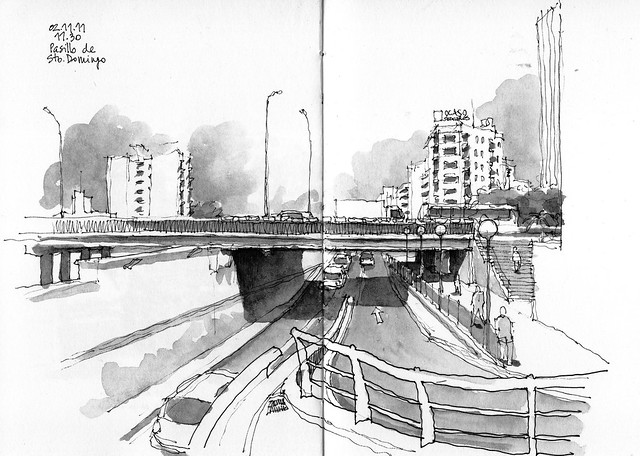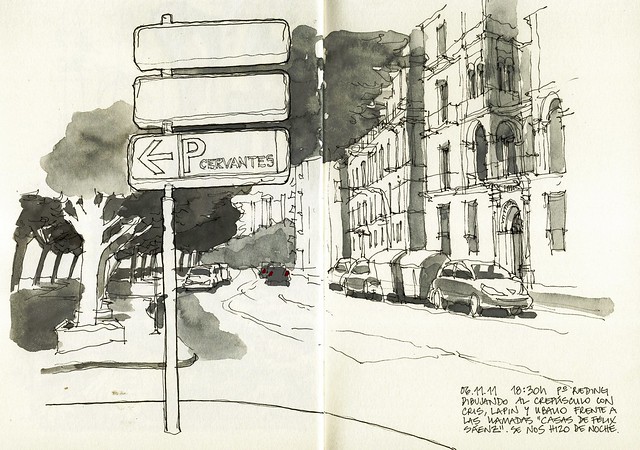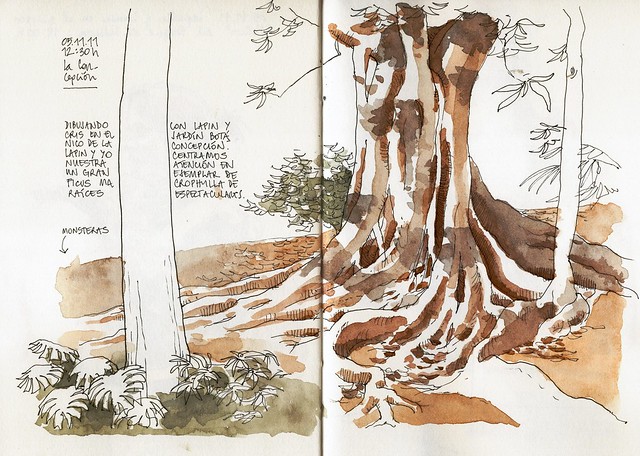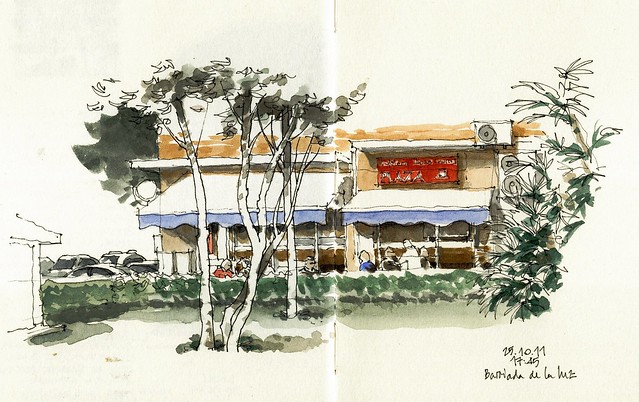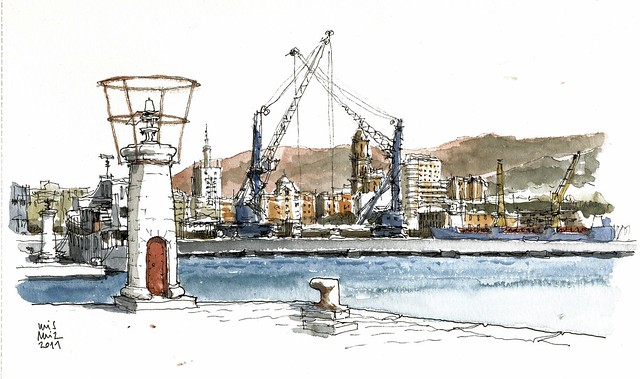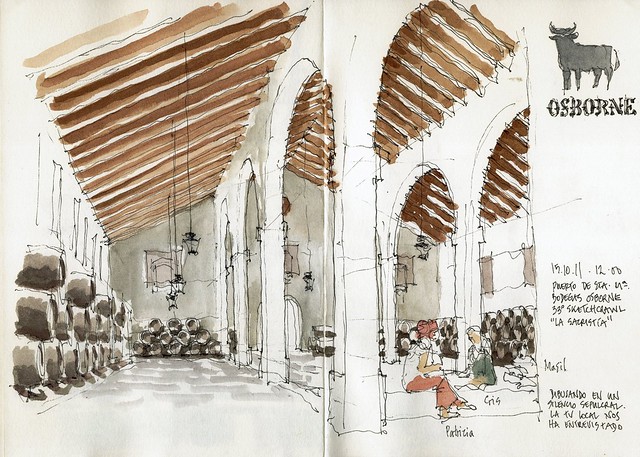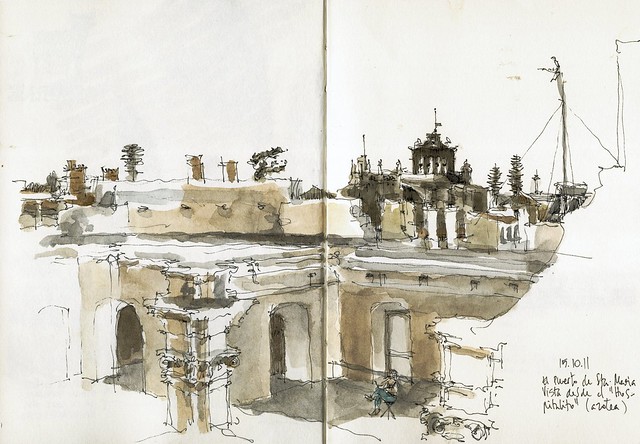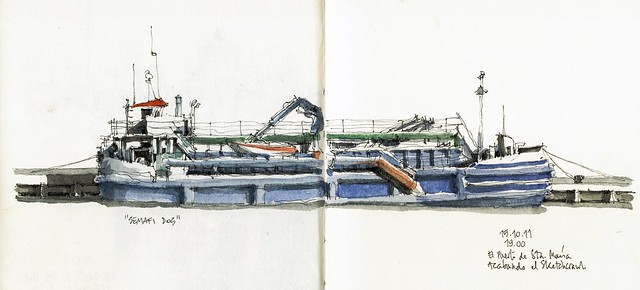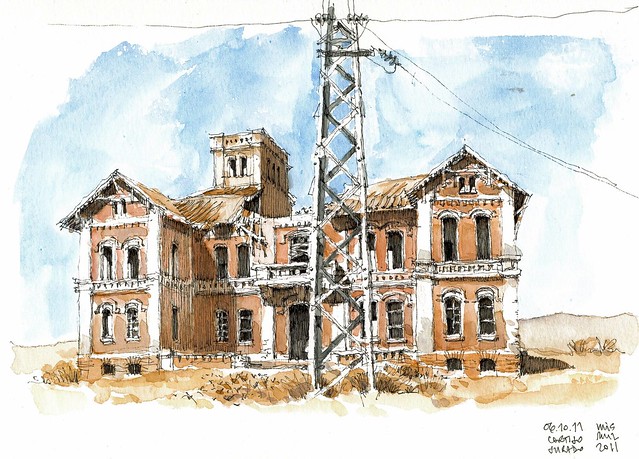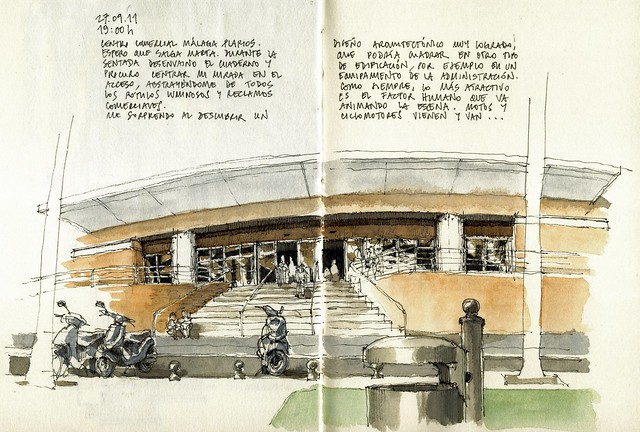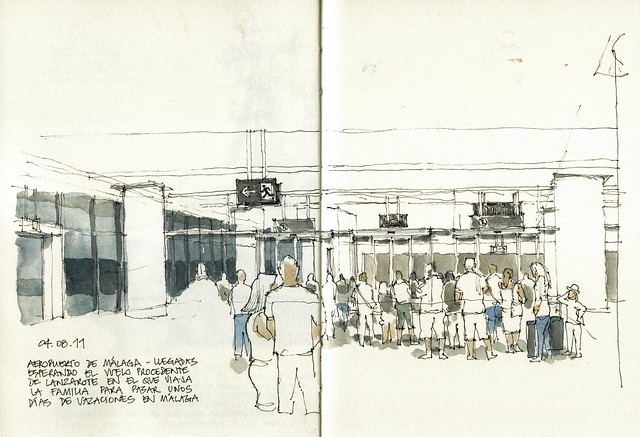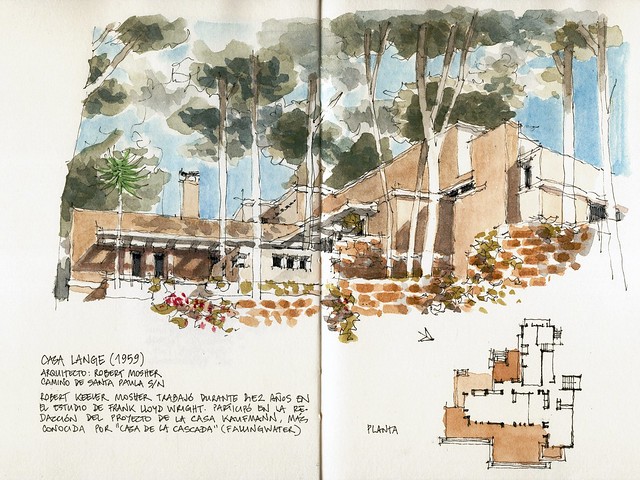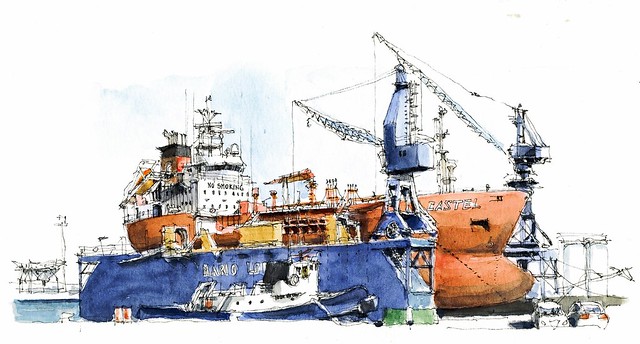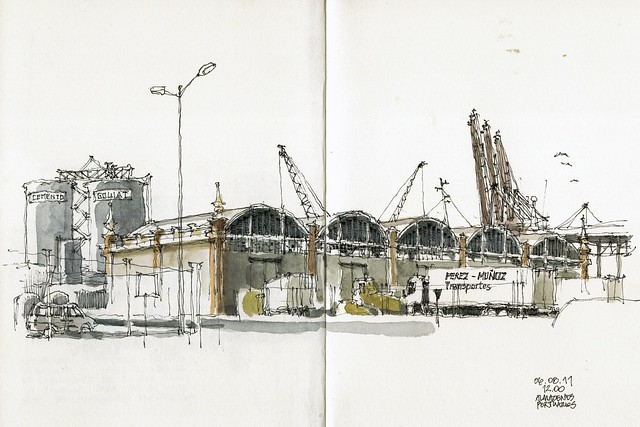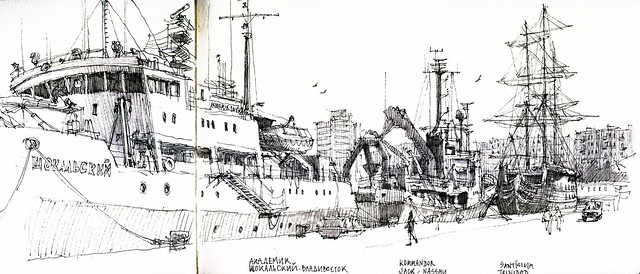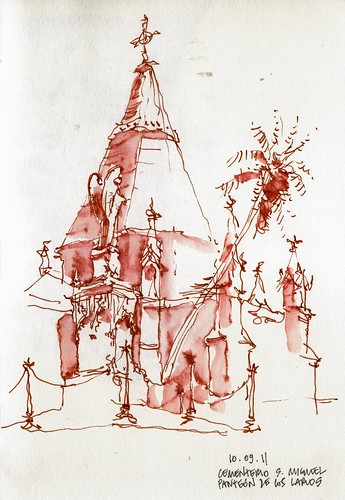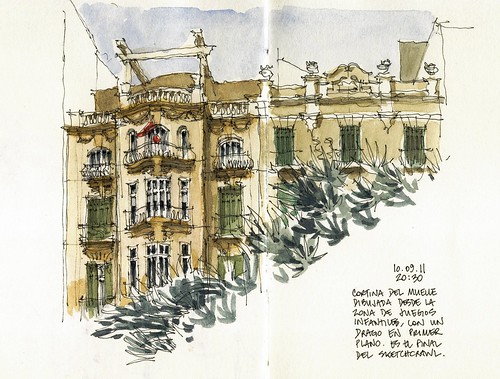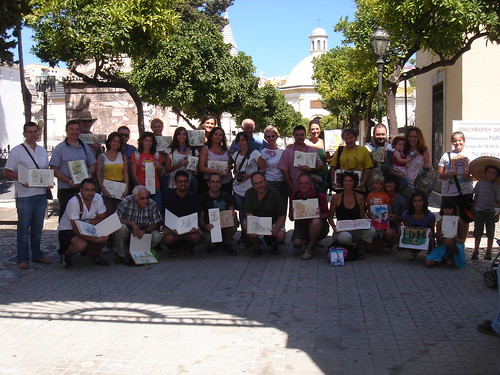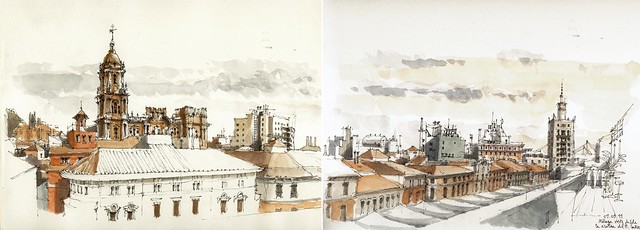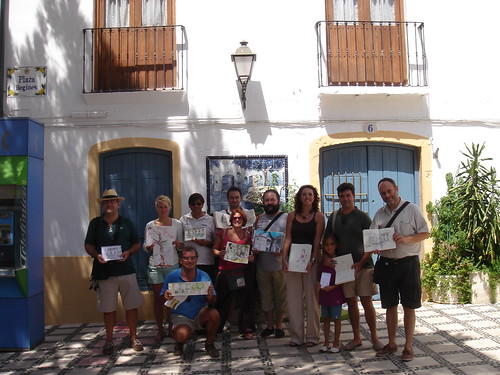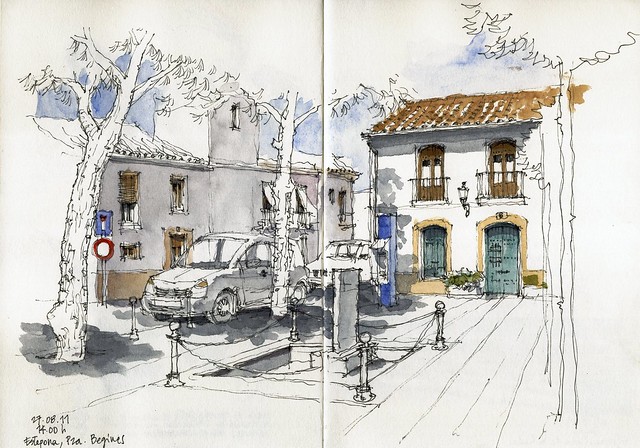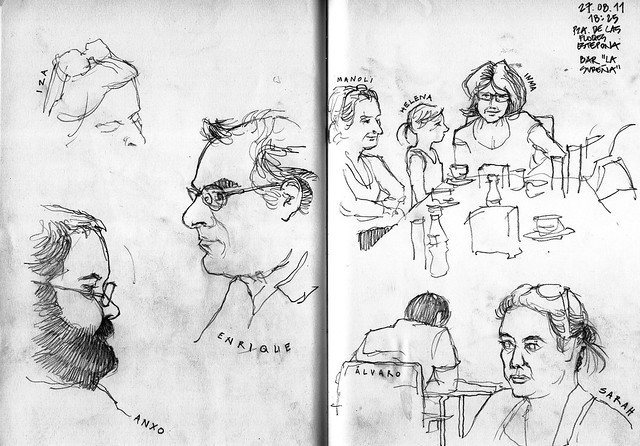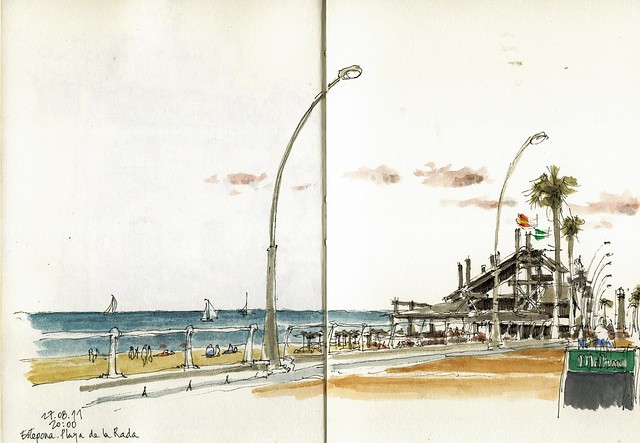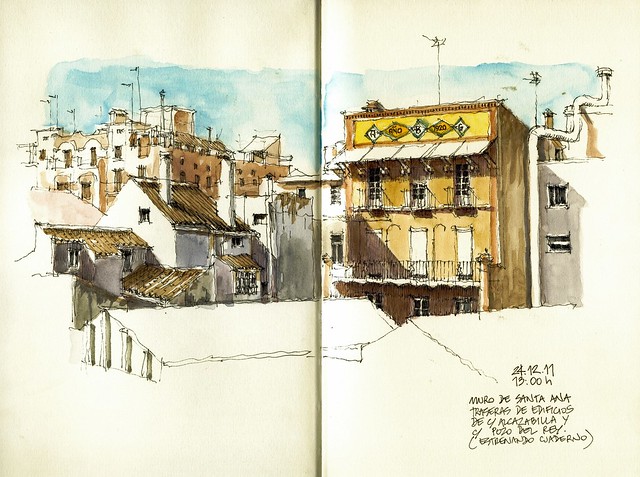
Entre el gremio de los arquitectos circulan un par de historias que aluden al perfeccionismo en el desempeño de nuestra profesión, incluso en aspectos no perceptibles por quedar ocultos al ojo del observador. En una de ellas, Mies van der Rohe interpelaba a un operario sobre el aspecto poco estético del cordón de soldadura que estaba ejecutando. En la otra, era sir Edwin Lutyens el que reprochaba a un colaborador la descuidada composición de una fachada que estaba diseñando, que quedaba enfrentada a un estrecho callejón. En ambos casos, la respuesta era que las imperfecciones aludidas iban a ser impreceptibles por el observador, a lo que ambos arquitectos habrían respondido: "pero dios sí lo ve".
Recordaba estas anécdotas mientras dibujaba el apunte que acompaña estas líneas. Se trata de un interior de manzana, al que se asoman las fachadas traseras de varios edificios. De entre ellos llama poderosamente la atención uno de ellos, cuya fachada al patio interior ha resultado parcialmente expuesta después de las demoliciones realizadas para construir el túnel bajo la Alcazaba. Una fachada que cuando fue concebida no iba a ser vista desde el exterior, sólo desde unas pocas ventanas de las traseras de los edificios circundantes. Y, sin embargo, resulta casi conmovedor el mimo puesto en la composición del alzado, con los huecos perfectamente alineados, bandas decorativas de ladrillo visto, ménsulas pétreas pareadas sobre las que apoyan tornapuntas de madera, y sobre todo ese gran e insólito friso de azulejo con las iniciales A, B, G y la leyenda "AÑO 1920". ¿No habría resultado más coherente disponer este rótulo en la fachada principal, a la vista de toda la ciudad? ¿Quién era en última instancia el destinatario de este mensaje?
Among us architects there are a couple of stories that allude to the perfection in the performance of our profession, even in non perceptible subjects that are to remain hidden to the eye of the beholder. In one of those stories, Mies van der Rohe confronted a worker about a piece on shoddy interior welding. In the other, it was Sir Edwin Lutyens which it critisized the careless composition of a facade, which was faced with a narrow alley. In both cases, the answer was that these hidden imperfections would not be noticed by anyone, to which both architects responded, "god will notice."
I reminded these anecdotes as I drew the sketch that accompanies these lines. It shows is a block interior, overlooked by the rear facades of several buildings. One of them truly stands among the others, whose inner courtyard facade has been partially exposed after some recent demolitions. A facade that when it was conceived would not be seen from the outside, only from a few rear windows of surrounding buildings. And yet, it is almost touching the care put on the composition of the elevation, with the windows perfectly aligned, decorative brick bands , paired stone corbels that support on wooden struts, and above all that great and unusual tile frieze with the initials A, B, G and the legend "Year 1920". Would not it have been more consistent to have this sign on the main facade, in view of the entire city? Who was the ultimate recipient of this message?
